1. Black Fixtures and Hardware
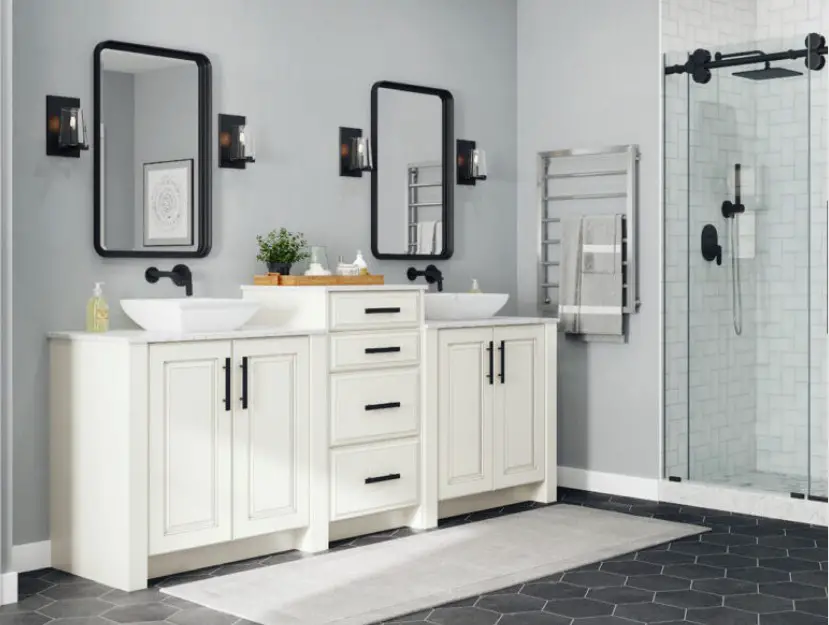
Matte black fixtures and hardware, celebrated for their bold and modern appeal, are beginning to feel overly trendy and difficult to maintain. While they add striking contrast to kitchens and bathrooms, these fixtures often show water spots, fingerprints, and soap residue, requiring frequent cleaning to preserve their look. Over time, the novelty of black finishes may give way to a desire for subtler, more timeless options.
Homeowners are already exploring brushed metals, satin brass, and polished nickel as alternatives that offer warmth and versatility. Additionally, these softer finishes pair well with a variety of design styles, making them a safer long-term investment. By 2030, the demand for understated and durable hardware will likely surpass the fleeting popularity of black fixtures.
2. Wall-to-Wall Glass Showers
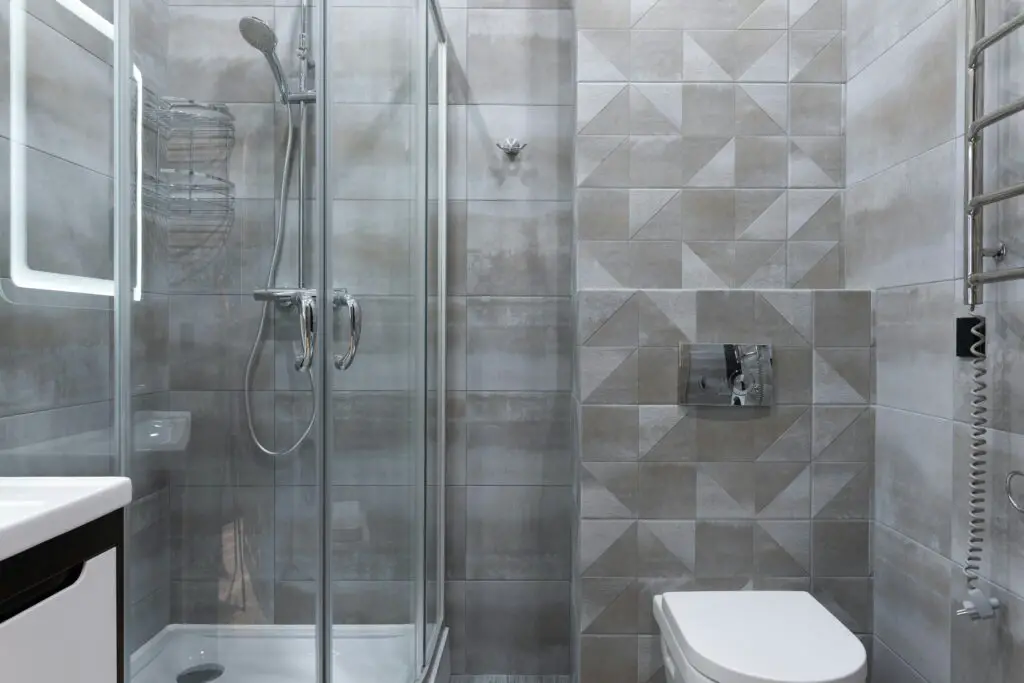
Wall-to-wall glass showers, often associated with luxury and modernity, are gradually being reevaluated for their practicality. These showers require constant cleaning to prevent water spots, soap scum, and grime from accumulating on the glass panels. Their lack of privacy can also feel impractical, particularly for family homes or shared bathrooms. Additionally, the sleek, open design of these showers often results in poor heat retention, which can be uncomfortable in colder climates.
As homeowners seek functional and user-friendly designs, partially frosted glass or enclosed shower spaces with tiled walls may become more popular. These alternatives provide privacy and are easier to maintain while still offering a stylish look. By 2030, shower designs are likely to emphasize a balance between elegance and everyday usability.
3. Statement Tiled Backsplashes
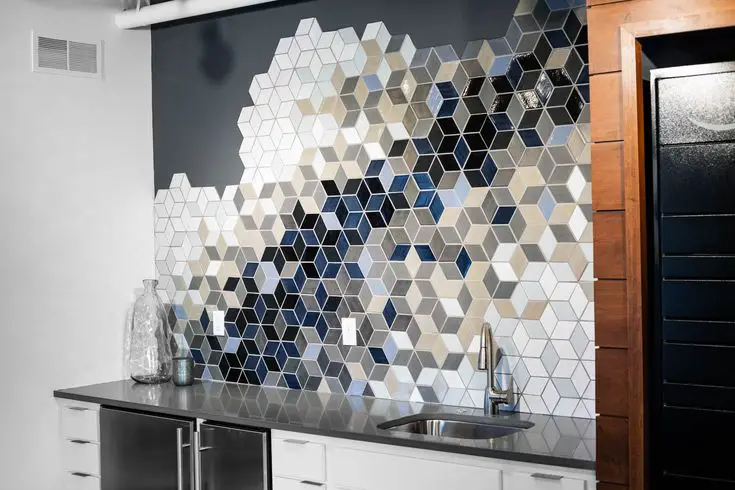
Statement tiled backsplashes, with their bold patterns and vibrant colors, are increasingly seen as a design risk rather than an enduring feature. While they can serve as a focal point in the kitchen, these tiles are expensive to install and difficult to replace, especially when trends shift. Homeowners often find that the dramatic designs, though eye-catching, can clash with evolving decor styles, limiting their flexibility.
As practicality becomes a priority, neutral and timeless options, such as subway tiles or natural stone, are gaining popularity. These alternatives provide a clean, elegant look that complements a wide range of aesthetics and ensures greater longevity. By 2030, bold backsplashes may be reserved for accent walls or smaller design elements, leaving the main kitchen surfaces understated.
4. Artificial Turf Lawns
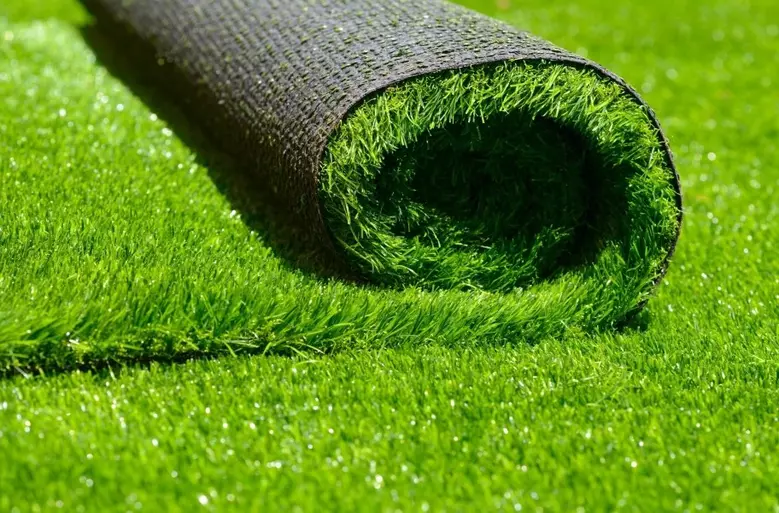
Artificial turf lawns, once valued for their low maintenance and green appearance, are being reconsidered due to their environmental drawbacks. While they eliminate the need for mowing and watering, artificial turf can trap excessive heat, making outdoor spaces uncomfortable during summer months. Additionally, the synthetic material offers no ecological benefits, such as supporting soil health or providing a habitat for pollinators.
Over time, artificial turf can degrade, leading to costly replacements and potential waste. As environmental consciousness grows, homeowners are turning to sustainable landscaping options, including drought-tolerant plants, native grasses, and rain gardens. These alternatives are not only eco-friendly but also add natural beauty and biodiversity to outdoor spaces. By 2030, artificial turf may be replaced by landscaping designs that prioritize sustainability and environmental harmony.
5. Concrete Floors

Concrete floors, once coveted for their industrial and minimalist aesthetic, are losing their appeal due to their practical drawbacks. While they provide a sleek, modern vibe, they are hard, cold, and uncomfortable to stand on for long periods, making them less ideal for homes with high foot traffic or families with young children. In colder climates, the lack of natural insulation can make concrete floors feel particularly unwelcoming without costly heating systems.
Furthermore, concrete is prone to cracking over time, which can detract from its visual appeal and require expensive repairs. By 2030, homeowners may favor warmer, more forgiving materials like hardwood, bamboo, or cork, which offer a balance of durability and comfort. These alternatives also provide a broader range of styles, from rustic to contemporary, without the harshness of concrete.
6. Shiplap Walls
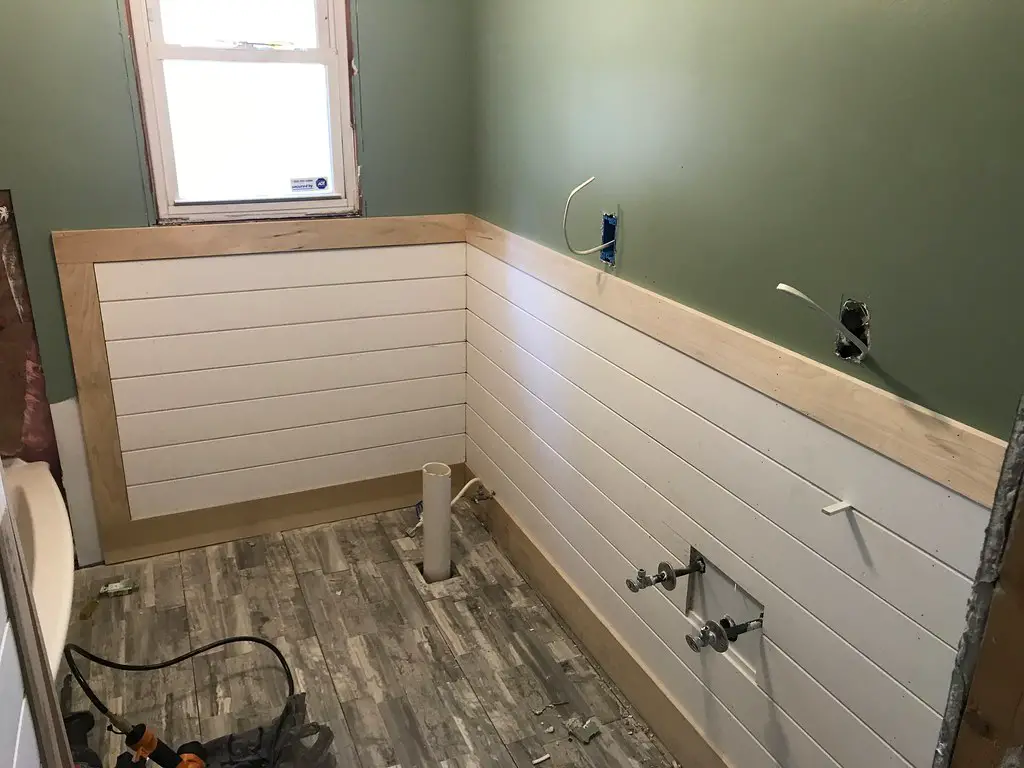
Shiplap walls, once synonymous with the cozy, rustic farmhouse aesthetic, are beginning to feel overdone and outdated. Popularized by TV renovation shows, this trend has been adopted in countless homes, leading to a sense of ubiquity that diminishes its original charm. As design tastes evolve, homeowners are favoring more unique and contemporary wall treatments, such as textured plaster, bold wallpaper, or wood paneling in darker finishes.
Shiplap’s overuse in suburban and urban settings can also make it feel out of place, as it was initially inspired by coastal and rural architecture. By 2030, this once-beloved feature may be replaced by designs that add individuality and a sense of timelessness to interiors. Homeowners looking for alternatives are exploring sustainable materials and custom finishes that better reflect their personal style.
7. Barn Doors
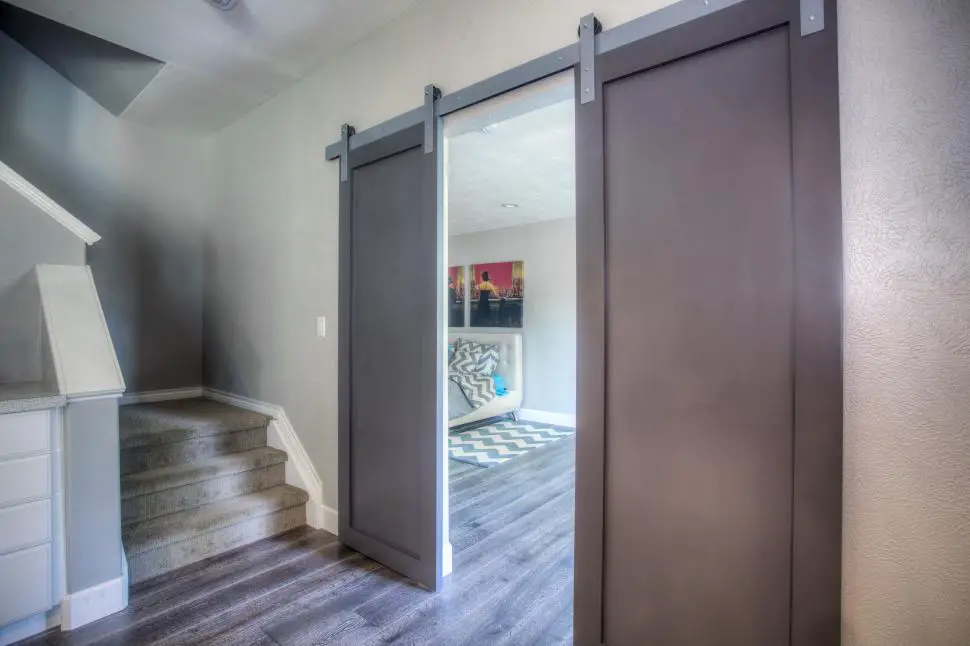
Once a popular rustic accent, barn doors may soon lose their appeal as they become overused and less practical for modern living. These sliding doors lack soundproofing, which can be a significant drawback for bedrooms, bathrooms, and home offices. Their heavy hardware and sometimes clunky operation can also make them inconvenient compared to traditional hinged doors.
Additionally, the farmhouse aesthetic that barn doors often accompany may feel dated as interior design trends shift toward cleaner, more minimalist styles. By 2030, innovative door designs that combine style with functionality are likely to take center stage.
8. Open-Concept Floor Plans
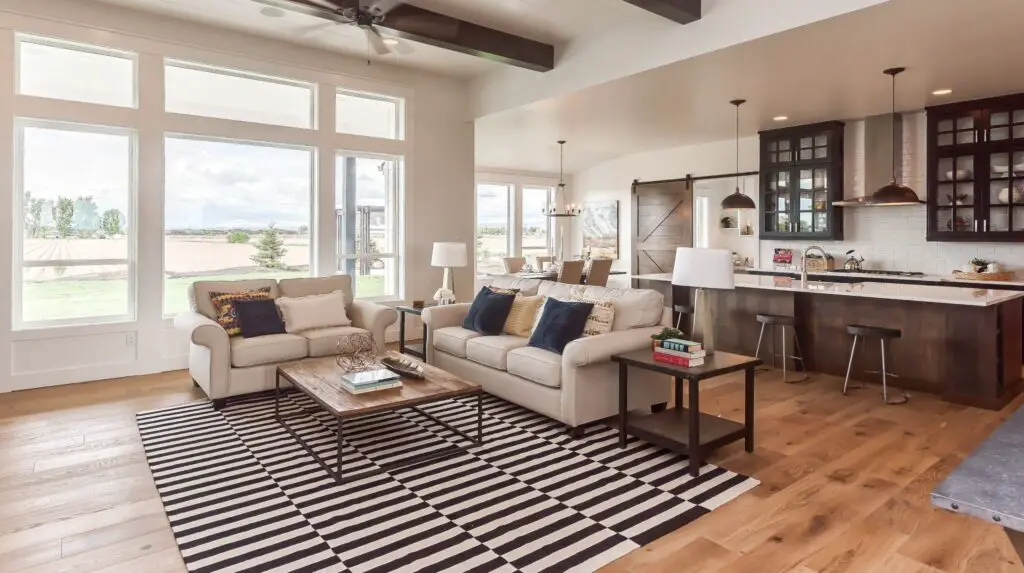
The popularity of open-concept floor plans may be waning as homeowners seek more privacy and functionality in their living spaces. While these layouts promote a sense of spaciousness and foster connectivity, they can amplify noise and leave few opportunities for quiet, separate retreats. The lack of defined spaces can also make it challenging to designate areas for specific activities, such as work-from-home setups or cozy family gatherings.
As lifestyles shift, many families are rediscovering the benefits of having distinct rooms, such as offices, libraries, or formal dining areas. Additionally, heating and cooling open spaces can be less energy-efficient compared to smaller, compartmentalized rooms. By 2030, the pendulum could swing back toward traditional layouts that prioritize comfort and versatility.
9. All-White Kitchens
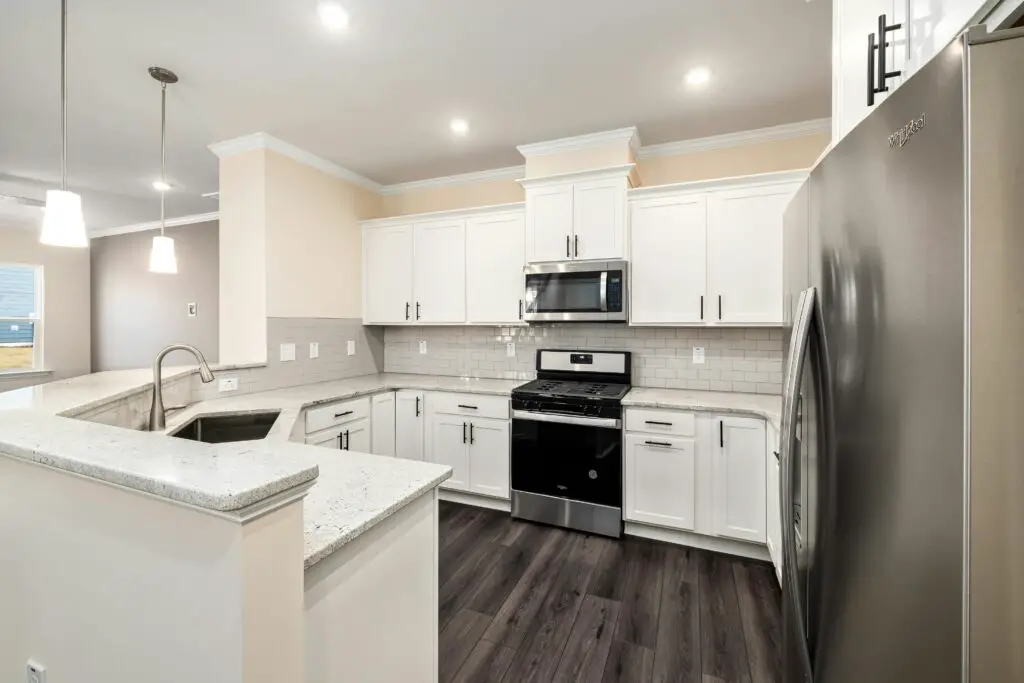
Once the hallmark of sleek and modern design, all-white kitchens are losing favor due to their impracticality for busy households. Pristine white cabinetry, countertops, and walls, while undeniably chic, show every stain, fingerprint, and scuff, making them high-maintenance and stressful to upkeep. Families with children or pets may find these spaces less functional, prompting a move toward more forgiving materials and colors.
Future kitchens are expected to incorporate warmer, natural tones, such as earthy greens, navy blues, or wooden finishes, which are not only stylish but also easier to maintain. Mixing materials, like pairing stone countertops with darker cabinets, creates a layered, welcoming aesthetic. This evolution reflects a desire for spaces that balance elegance with practicality.
10. Floating Vanities
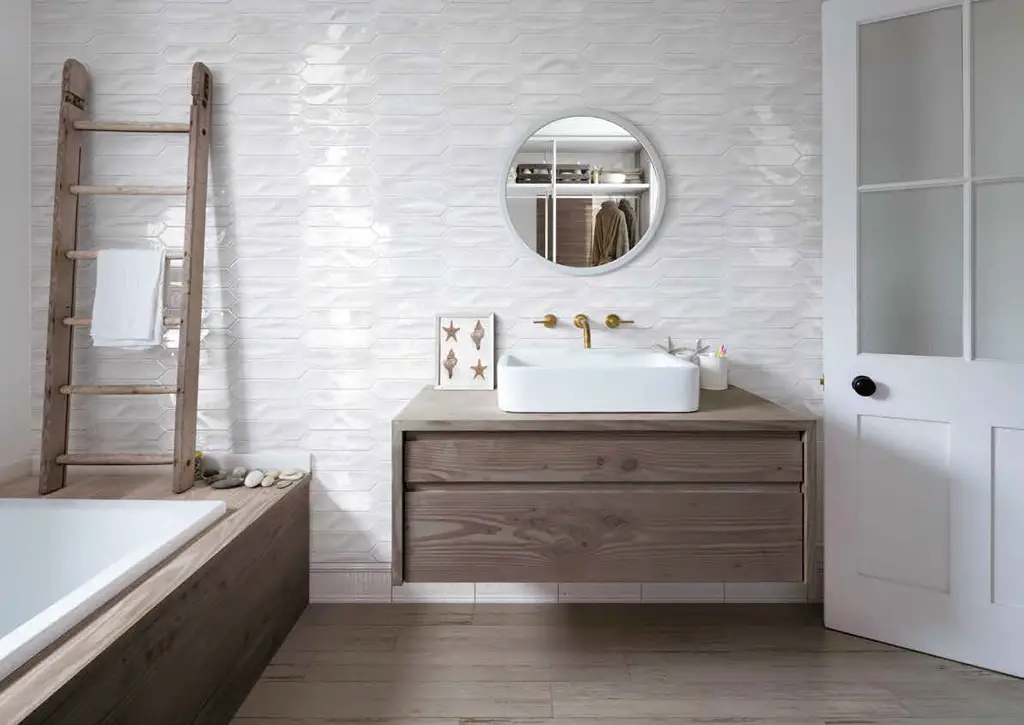
Floating vanities, celebrated for their sleek, minimalist design, may eventually fall out of favor due to their lack of practicality. These vanities often provide limited storage, making it challenging for homeowners to keep their bathrooms organized and clutter-free. While they work well in minimalist spaces, their open design can leave cleaning supplies, toiletries, and other essentials exposed.
Future bathroom trends may favor vanities that offer a balance of style and utility, such as floor-mounted designs with built-in drawers or cabinets. Materials like wood and stone could also add a sense of warmth and timelessness.
11. Faux Industrial Lighting
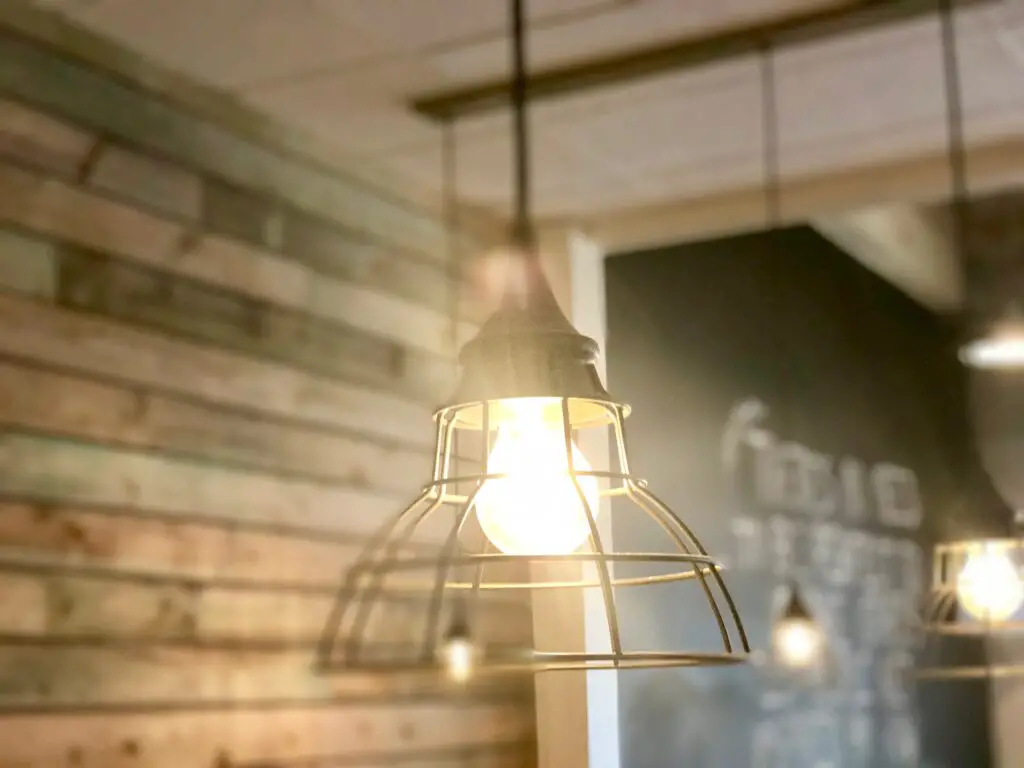
Faux industrial lighting, featuring exposed Edison bulbs and metal fixtures, may feel dated as homeowners seek softer, more versatile designs. These fixtures, once praised for their edgy, urban appeal, can create overly harsh lighting that doesn’t complement all interiors. As design preferences shift toward blending comfort and elegance, industrial-style lighting might give way to more timeless options like pendants with frosted glass, chandeliers, or LED fixtures.
Homeowners are also opting for fixtures that integrate seamlessly with various styles, from transitional to contemporary. Additionally, advancements in lighting technology, such as smart and energy-efficient designs, are making these older trends less desirable.
12. Gray Everything

For years, gray has dominated home interiors, with walls, floors, and furniture designed in this neutral shade for its modern and versatile appeal. However, the overuse of gray is beginning to feel sterile and uninspiring, leaving homes looking cold rather than welcoming. As design preferences shift, homeowners are gravitating toward warmer tones such as beige, terracotta, and muted greens, which create a cozier and more inviting atmosphere. Bold pops of color, like jewel tones or earthy accents, are also making a comeback, adding personality and vibrancy to interiors.
Furthermore, gray’s neutrality may no longer align with the growing emphasis on individual expression in home design. Textured elements like patterned wallpaper, colorful rugs, and statement furniture pieces are providing alternatives to monotone gray spaces. By 2030, homes may favor richer palettes that evoke comfort and creativity over the muted, cool grays of the past decade.
13. Open Shelving in Kitchens
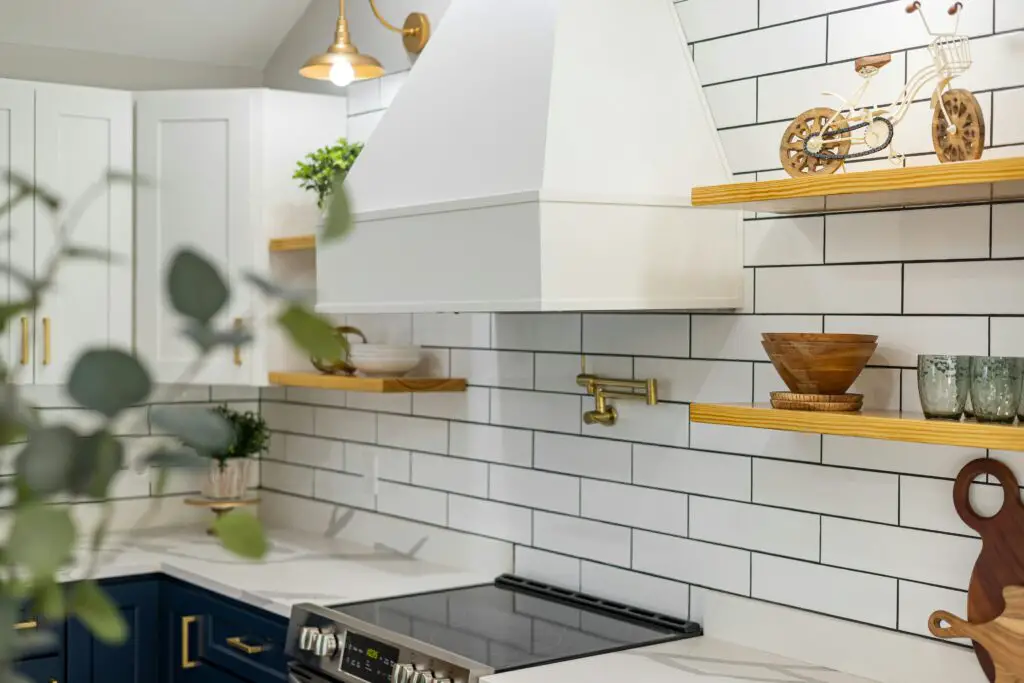
While open shelving in kitchens offers a chic, modern aesthetic, it is increasingly viewed as impractical for daily use. These shelves require meticulous organization and constant upkeep to maintain their visually pleasing appearance, as they leave items exposed to dust, grease, and clutter. For busy households, the effort to keep open shelving presentable can outweigh its decorative appeal. Additionally, this trend often sacrifices storage space, limiting its functionality for homes with limited cabinetry.
As practicality takes precedence, closed cabinets are regaining popularity, offering both a streamlined look and better storage solutions. Homeowners are also incorporating glass-front cabinets, which strike a balance between visibility and protection. By 2030, kitchens are expected to prioritize function and ease of maintenance over trends that prioritize aesthetics alone.
14. Smart Home Overload
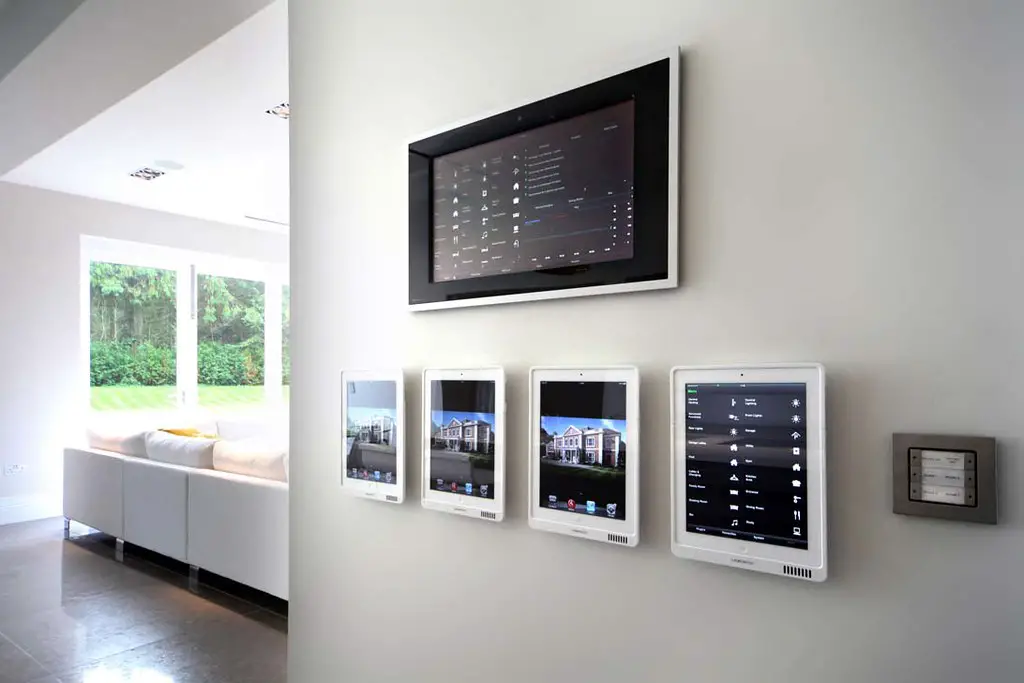
Smart home integrations, while convenient, are beginning to face backlash for their complexity and potential obsolescence. Features like app-controlled lighting, voice-activated appliances, and automated blinds often require constant updates, which can be frustrating for homeowners. Additionally, the over-reliance on technology can lead to vulnerabilities, such as cybersecurity risks or system failures. As technology evolves rapidly, some smart home devices may become outdated within just a few years, making them costly and impractical in the long term.
By 2030, homeowners may prioritize simpler, user-friendly solutions that blend convenience with reliability. The emphasis could shift toward sustainable and energy-efficient systems that require less maintenance and are designed to last.
15. Oversized Kitchen Islands
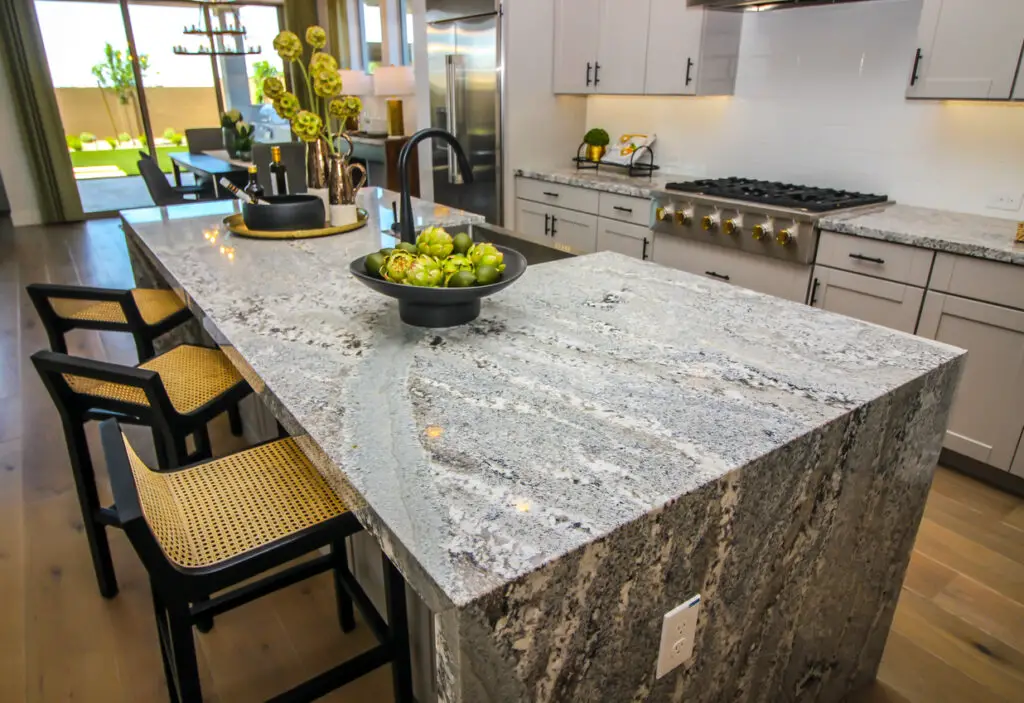
Oversized kitchen islands have become a status symbol in modern homes, often stretching across the entire kitchen. While they offer ample prep space and seating, they can dominate the room and disrupt the flow of movement. In smaller homes, these massive islands can feel more like an obstacle than a feature. They also encourage clutter, becoming a catch-all for everything from mail to backpacks.
As design shifts toward more intentional and efficient use of space, smaller, multifunctional islands or peninsula layouts may take their place. These alternatives allow for better traffic flow and more flexible kitchen configurations. By 2030, the trend may lean toward compact, smartly designed islands that serve multiple purposes without overwhelming the room. Function will win out over sheer size.
16. Faux Wood Tile
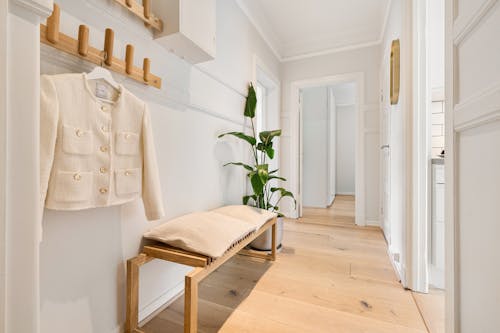
Faux wood tile was once a clever way to get the look of hardwood with the durability of tile, especially in bathrooms and kitchens. But over time, the artificial grain patterns and repetitive designs can start to feel inauthentic and visually flat. Unlike real wood, these tiles lack warmth and character, and they can feel cold underfoot. Plus, grout lines require maintenance that real wood doesn’t.
As homeowners seek more natural and tactile materials, genuine hardwood or engineered wood with waterproof finishes is making a comeback. Even luxury vinyl planks now offer more realistic textures and easier installation. By 2030, faux wood tile may be seen as a compromise that didn’t quite deliver. Authenticity is becoming the new luxury.
17. Neon LED Accent Lighting
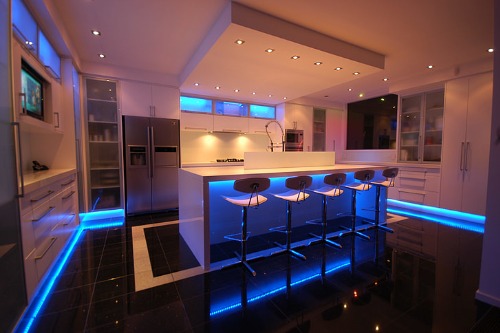
Neon LED strips under cabinets, behind TVs, or outlining ceilings have surged in popularity thanks to social media and gaming culture. While they can create a dramatic effect, they often clash with more refined or timeless interior styles. The harsh glow can feel more nightclub than cozy home, and the novelty tends to wear off quickly. In many cases, the lighting becomes a distraction rather than an enhancement.
As lighting trends evolve, homeowners are gravitating toward layered, ambient lighting that adds warmth and depth. Think dimmable sconces, pendant lights, and concealed LEDs that highlight architectural features. By 2030, neon accents may be relegated to dorm rooms and TikTok videos. Subtlety will replace spectacle.
18. Minimalist Open Shelving
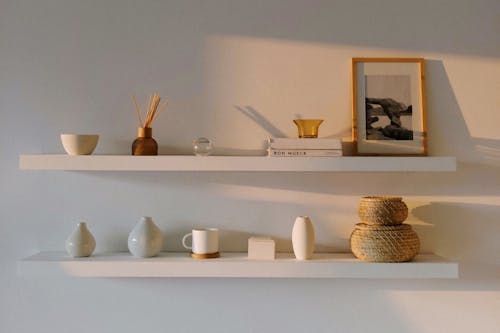
Open shelving in kitchens was once hailed as a minimalist dream—airy, accessible, and perfect for displaying curated dishware. But in practice, it often leads to visual clutter and constant dusting. Unless you’re styling your shelves like a magazine shoot every week, they can quickly look messy and impractical. For busy households, the lack of concealed storage becomes more of a hassle than a design win.
Cabinets with glass fronts or mixed storage solutions are making a comeback, offering both display and discretion. These options allow for personality without sacrificing function. By 2030, open shelving may be remembered as a Pinterest fantasy that didn’t quite work in real life. Practicality is making a stylish return.
19. Industrial Pipe Shelving
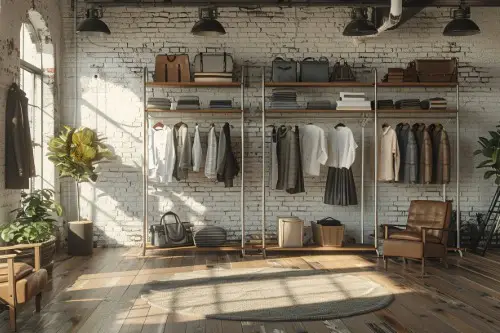
Industrial pipe shelving, once a go-to for DIY enthusiasts and loft-style interiors, is starting to feel overly contrived. The exposed metal and reclaimed wood combo was meant to evoke a raw, urban vibe, but it’s become so widespread that it now feels more cliché than edgy. These shelves often lack adjustability and can be difficult to clean or modify. Plus, they don’t always blend well with evolving decor styles.
As interiors shift toward softer, more organic aesthetics, industrial elements are being replaced by natural materials and cleaner lines. Floating wood shelves or built-in cabinetry offer a more refined and timeless look. By 2030, pipe shelving may be seen as a relic of the “hipster industrial” era. The trend is rusting out.
20. Accent Walls in Loud Colors
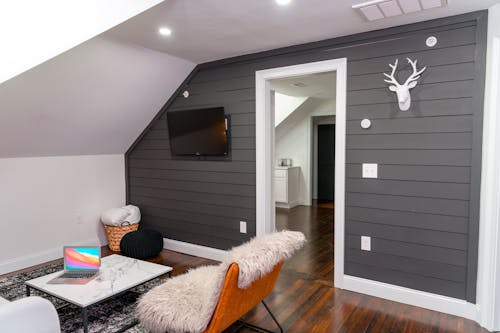
Bold accent walls in colors like fire-engine red, lime green, or electric blue were once a quick way to add personality to a room. But these loud hues can quickly become overwhelming and limit future design flexibility. They often clash with furniture and decor, making it harder to create a cohesive space. What once felt daring now feels dated and overly dramatic.
Neutral palettes with layered textures are becoming the preferred way to add depth and interest. Subtle wallpaper, wood paneling, or tone-on-tone paint techniques offer sophistication without the shock factor. By 2030, loud accent walls may be remembered as a design shortcut that lacked staying power. Calm is the new bold.
21. Sliding Barn-Style Shower Doors
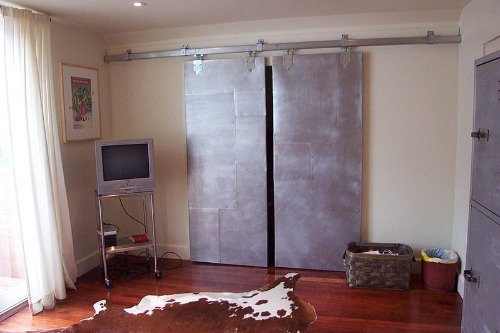
Barn-style sliding doors have made their way into bathrooms, particularly as shower enclosures, but their practicality is questionable. These doors often lack a proper seal, leading to water leakage and poor insulation. The heavy hardware can also be cumbersome and prone to rust in humid environments. What looks rustic-chic can quickly become a maintenance headache.
Frameless glass or pivot doors are gaining favor for their sleek appearance and better functionality. They offer a cleaner silhouette and are easier to clean and maintain. By 2030, barn-style shower doors may be seen as a design mismatch—better suited for barns than bathrooms. Style should never come at the cost of performance.
22. Overly Themed Rooms
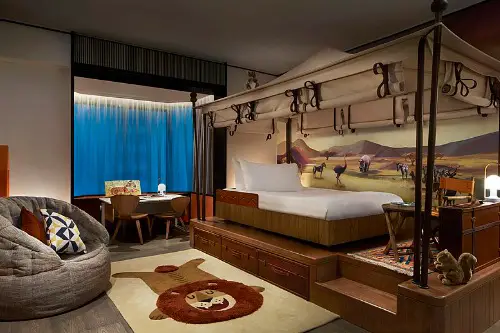
Rooms designed around a single, rigid theme—like “nautical,” “rustic cabin,” or “Parisian café”—can feel charming at first but quickly become tiresome. These spaces often rely on kitschy decor and repetitive motifs that lack depth or adaptability. Once the novelty fades, the room can feel more like a set than a living space. It also makes redecorating more difficult, as every piece is tied to the theme.
Designers are now favoring layered, eclectic interiors that evolve over time. Mixing styles, eras, and textures creates a more personal and enduring aesthetic. By 2030, overly themed rooms may be seen as gimmicky and creatively limiting. Flexibility is the new foundation of good design.
23. Ultra-High Kitchen Cabinets
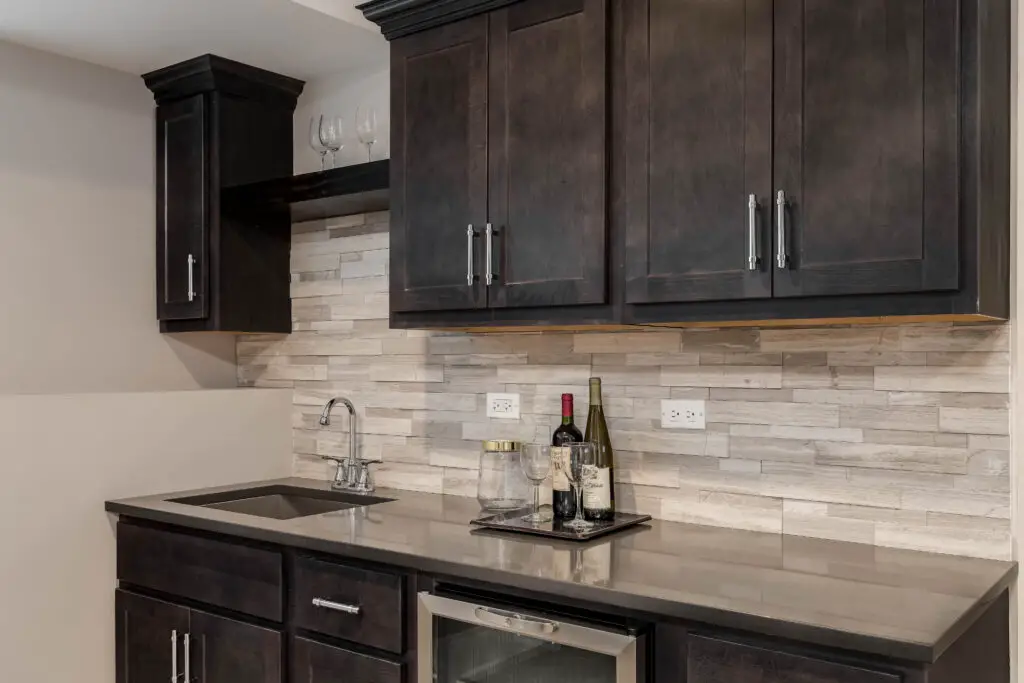
Ceiling-height kitchen cabinets were once seen as a smart way to maximize storage, but they often create more problems than they solve. The top shelves are usually inaccessible without a step stool, making them impractical for daily use. They can also make kitchens feel cramped or top-heavy, especially in smaller spaces. Cleaning the uppermost areas is another hassle most homeowners would rather avoid.
Designers are now embracing a mix of open shelving, standard-height cabinetry, and decorative soffits to balance form and function. This approach keeps storage within reach and maintains visual harmony. By 2030, ultra-high cabinets may be viewed as an overcorrection in the quest for storage. Sometimes, less really is more.
24. Faux Fireplace Mantels

Faux fireplace mantels, often installed for decorative purposes in homes without chimneys, are starting to feel like set pieces rather than functional features. While they can add architectural interest, they often lack context and purpose, especially in modern or minimalist homes. Without a real firebox or heat source, they can come off as inauthentic. Over time, they may feel more like clutter than character.
As homeowners prioritize authenticity and utility, real fireplaces—whether wood-burning, gas, or electric—are making a comeback. Alternatively, built-in shelving or media walls offer more practical focal points. By 2030, faux mantels may be seen as a design detour that didn’t quite warm up the room. Real function is reclaiming the spotlight.
25. All-Mirrored Walls
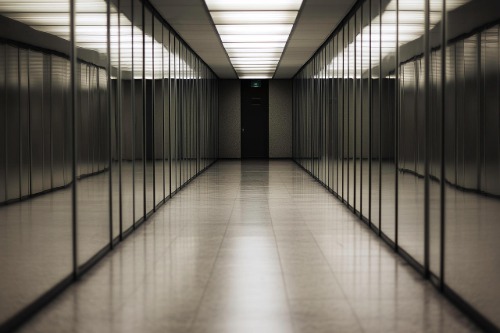
All-mirrored walls, once a staple of glam interiors and small-space hacks, are starting to feel dated and overwhelming. While they can make a room appear larger, they also reflect clutter and can create a disorienting visual effect. Cleaning them is a constant chore, and they rarely blend well with evolving decor styles. What once felt luxurious now feels more like a relic of the ’80s.
Designers are now using mirrors more strategically—framed, antique, or uniquely shaped pieces that act as accents rather than entire walls. These options add light and depth without overpowering the space. By 2030, full mirrored walls may be remembered as a flashy trend that lost its shine. Subtle reflection is the new direction.
26. Live-Edge Wood Everything
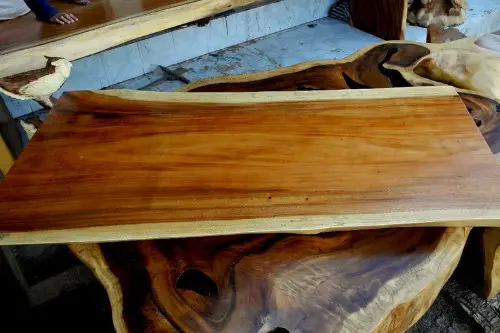
Live-edge wood furniture and countertops surged in popularity for their organic, artisanal appeal. From dining tables to bathroom vanities, these pieces were meant to bring nature indoors with their raw, uncut edges and visible grain. But as the trend spread, it lost its uniqueness—mass-produced versions now mimic the handcrafted look, diluting its original charm. Plus, the irregular shapes can be impractical, especially in tight or modern spaces.
As design moves toward cleaner lines and more refined natural materials, the exaggerated rusticity of live-edge pieces may start to feel forced. Homeowners are gravitating toward smoother finishes and more versatile silhouettes that blend better with evolving styles. By 2030, live-edge everything might be seen as a heavy-handed attempt at authenticity. Nature-inspired design will remain—but with a lighter, more thoughtful touch.
This post 26 Home Trends That Will Look Ridiculous in a Decade was first published on Greenhouse Black.
